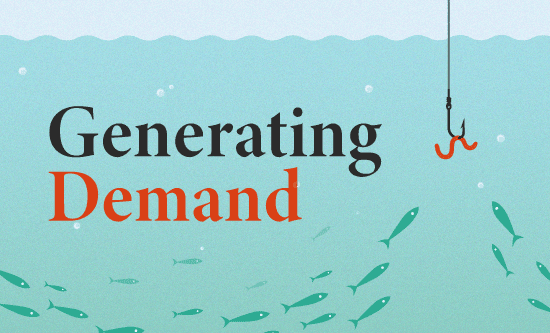There are two ways to generate demand for your business, buy it or find it.
Most organisations opt for ‘buy it’ and by buying it I mean they run promotions and discounts eg. 15% off, Buy one get one free, $10 off your first purchase. There is nothing wrong with promotional marketing, it’s a tried and true method of generating sales. The problem is it’s expensive, and it loses its effectiveness over time as consumers become accustomed to the discounts and time their purchase with a discount cycle or churn and switch based on the best “deal”.
Promotional marketing is popular because it’s easy. Create a great offer, load it up, blast it to the base, the bigger the offer, the bigger the response, rinse and repeat. For time poor marketers, it’s the simplest solution. As organisations cut costs and reduce their marketing teams, promotional marketing becomes the dominant marketing device. The reason a promotional marketing offer needs to be aggressive is because it needs to drag a consumer into the purchasing window. How many times have you purchased something you didn’t really need because it was 30% off Promotional offers can, unfortunately, be easily copied. How often have you seen lazy competitors, simply say – we will match any offer. You will just get trapped in a race to the bottom, if your competitors response is “yep what he said, I’ll give you that too”.
The other way to generate demand is to find it through targeted marketing. That is find customers who are standing at the “purchasing window” and invite them in. It’s a lot easier and cheaper to convince a willing customer to purchase. The challenge with the finding customers approach is the search cost. It costs time and money to identify customers, target small groups regularly and manage the complex set of communications that are required.
To build out targeted “find it” strategies, marketers build out sophisticated customer lifecycle programs, triggers and events, models and multichannel communications. Often these programs will involve hundreds of campaigns and thousands of executions per month. One advantage of the targeted “find it” strategy is, it is hard to copy and replicate. As the strategy is highly targeted, you can personalise and curate offers. You can even optimise pricing, for example, for Rabbit Rewards in Thailand – we built a point price model, each customer was given a different point price for a redemption based on our estimate of what they would pay. By doing this, we increased redemptions by 16% and increased points redeemed (revenue) by 346%. Competitors can’t copy this strategy because, firstly the offers are targeted and not generally available and secondly because the pricing on each of them is different, so they can’t replicate it.
Promotional marketing is easy, simple but can be easily replicated and is expensive. Targeted marketing is complicated, expensive to operate, but is more efficient from a margin perspective. In truth, the two strategies are not mutually exclusive, successful organisations operate both strategies.
World class organisations put sophisticated targeting programs in place to deliver base level results and supplement it with promotional marketing to deliver short term bursts and to capitalise on external events like Christmas. Others rely heavily on promotional marketing to deliver short term goals at the expense of long term margins and ultimately sustainability.
 by Regan Yan, the CEO of Digital Alchemy.
by Regan Yan, the CEO of Digital Alchemy.
Regan is a subject-matter expert in analytical database marketing and customer relationship marketing, as well as an in-demand presenter and keynote speaker at national and international events. He also authors thought leadership pieces on data-driven marketing that can be found on the DA Blog.



